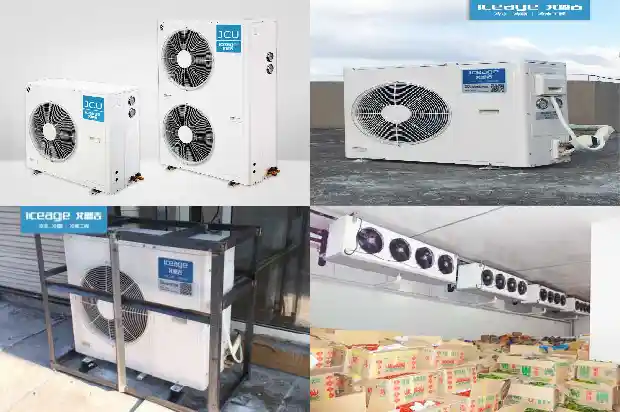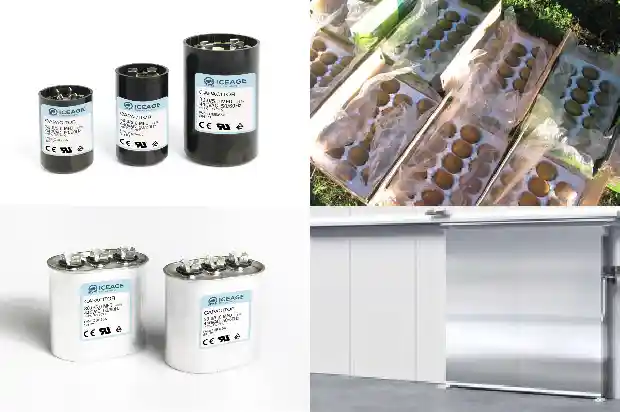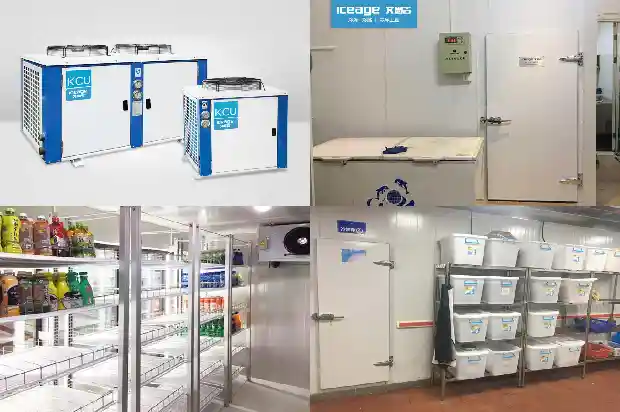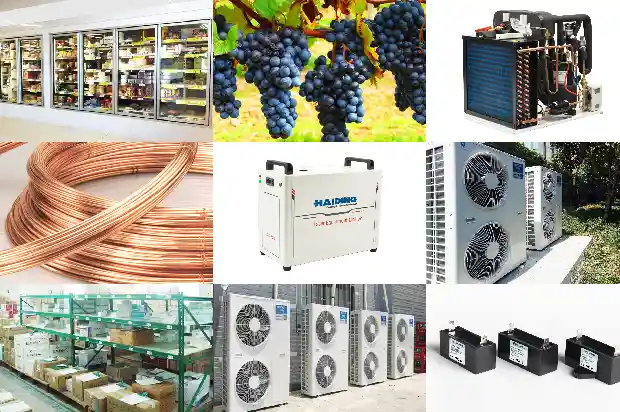Installation Precautions and Accessory Selection for Cold Storage Unit
2025-03-01
I. Installation Precautions for the Unit
- The unit has been charged with dry nitrogen. Please check it before connecting the system.
The unit should use a dedicated power supply and should not be shared with other electrical equipment.
- The grounding bolt is beside the unit control box. Please correctly connect the grounding wire to it to ensure safety. The cross-sectional area of the grounding wire should be the same as that of the power supply wire.
- After wiring the unit, a 500-volt insulation resistance tester must be used to measure the insulation resistance of the circuit to the ground, and the value should be above 5 megohms.
- Good ventilation should be maintained around the unit, and the ambient temperature should be below 38°C. An excessively high ambient temperature will lead to unit failures. Avoid direct sunlight. The condensed water in the compressor suction pipe can be drained.
- The distance between the air-cooled unit and the wall should not be less than 500 millimeters. The installation foundation of the unit should be flat and sturdy. The horizontal inclination should not be greater than three per thousand.
II. Refrigeration System Pipeline
In the Freon system, the design and installation of the suction pipe are particularly important.
In the Freon system, the design and installation of the suction pipe are particularly important.

- Ensure that the pressure drop does not exceed the allowable limit.
- Ensure that the necessary oil-carrying speed, generally 8m/s, should be maintained in the suction pipe, especially in the rising vertical pipe.
- Prevent the unevaporated liquid refrigerant from entering the compressor. A gas-liquid separator should be installed in the low-temperature (evaporation temperature below -40°C) system with large load changes.
- All horizontal suction pipes should be inclined towards the compressor with a slope of three per thousand to facilitate oil return.
- The pipeline layout should not be too close to the compressor.
- The refrigeration high-pressure pipeline should be as simple and short as possible, and avoid having depressions on the pipeline, as this will accumulate oil.
- It is recommended to insulate the suction pipe to limit the superheat of the suction gas.
- If the suction pipe is not insulated or there may be condensation, ensure that the condensed water does not flow to any electrical parts, such as the compressor junction box.
- The pipeline should be reliably fixed, especially at the holes it passes through or at the bends.
Avoid the collision and friction between the pipeline and sharp and hard objects.
III. Guide to Refrigeration System Accessories
- Selection of the Expansion Valve: Whether to choose an internal balance or an external balance depends on the pressure drop in the evaporator. For example, in an R22 system, when the pressure drop exceeds 1°C corresponding to the evaporation temperature. The pressure below the diaphragm of the internal balance expansion valve is the inlet pressure of the evaporator; while the pressure below the diaphragm of the external balance expansion valve is the outlet pressure of the evaporator.
- Oil Separator: The oil separator is installed on the exhaust pipe of the compressor. Its function is to separate the oil droplets from the gaseous refrigerant and prevent the oil droplets from entering the subsequent parts of the system. There is a float valve at the lower part of the oil separator. When the separated oil accumulates to a certain amount, the float valve will automatically open, and the oil will flow back to the compressor crankcase under the push of the high and low pressure difference. A high-efficiency oil separator can separate more than 90% of the oil droplets from the refrigerant.
It is recommended to install an oil separator in the following situations:
2.1 The pipeline distance from the compressor to the evaporator exceeds 30 meters or there are many oil traps.
2.
2 Devices with poor oil return such as serpentine tube evaporators are used.
2.3 Devices with multiple evaporators or multiple condensers are used.
2.4 Units with an evaporation temperature below -30°C. - Sight Glass: The flow state of the refrigerant liquid and the degree of its water content can be observed from the sight glass. When continuous bubbles are observed, it indicates poor cooling. When the water content indicator paper is blue, the refrigerant is dry. If it turns grayish white, it means the water content of the refrigerant has increased, and it can still operate. If it turns pink, the dry filter should be replaced.
- Solenoid Valve: Install a solenoid valve on the liquid supply pipe. Usually, it is synchronized with the action of the compressor, which can prevent a large amount of refrigerant liquid from entering the evaporator when the compressor stops, and reduce the possibility of liquid hammer when the compressor restarts.
- Crankcase Heater: The crankcase heater can keep the refrigeration machine lubricating oil at a relatively high temperature, reduce the content of liquid refrigerant in the oil, and avoid the boiling of the lubricating oil and its migration with the refrigerant when the compressor starts, resulting in oil shortage. All units in normal operation should use the equipped crankcase heater. The standard for the effectiveness of the crankcase heater is that the temperature of the crankcase is at least 10°C higher than the saturated suction temperature of the compressor.
Notes:
5.1 Power on the crankcase heater 12 hours before the unit runs for the first time.
5.2 The voltage of all crankcase heaters is 220V. - Gas-Liquid Separator: The function of the gas-liquid separator is to protect the compressor when the refrigerant liquid returns after startup, operation, or defrosting (heat pump). It provides additional internal volume to the low-pressure side of the system, can temporarily store the returned liquid refrigerant, and return it to the compressor at an allowable and controlled rate. Thus, it helps to protect against the transfer of refrigerant when the compressor stops. Gas-liquid separators should not be used in azeotropic refrigerant systems.
For refrigeration systems with large load changes, choosing a suction gas-liquid separator with a heat regenerator can more effectively prevent the occurrence of liquid hammer phenomena, and the refrigeration capacity of the system will also increase to some extent. The gas-liquid separator is very effective in preventing the possible damage caused by the temporary return of liquid refrigerant.
Related Articles
- Matters Concerning the Installation of Parallel Units
- Advanced Guide! Design and Installation of Refrigeration System Pipelines
- What Are the Acceptance Standards for Cold Storage Design and Installation?
- What issues should be noted during the installation of a small - scale cold storage?
- Instructions for Welding and Drainage in the Installation of Refrigeration Equipment Pipelines
- What is the Correct Operation Method of the Distribution Box during Cold Storage Installation?
- What Issues Should Be Noted in Cold Storage Installation and Construction?
- What Special Requirements are There for the Installation of Tea Cold Storage?
- Operating Principle and Standard Installation Steps of Multi - split Systems in Refrigerant Air - conditioning Systems
- How to Identify the Quality of Refrigeration Equipment Installation Materials?
- How to Identify Installation Materials for Refrigeration Equipment
- Knowledge, Installation and Maintenance of Cold Storage Systems
- Precautions for the Installation and Use of Water Flow Switches
- What safety measures should be paid attention to during the installation of cold storage?
- What are the precooling methods after the installation of cold storage?
- Selection and Installation of Thermal Expansion Valves
- Return Bend Setup and Installation Technical Requirements
- Daily Maintenance Training for Users after Installation of Small and Medium-Sized Cold Storages
